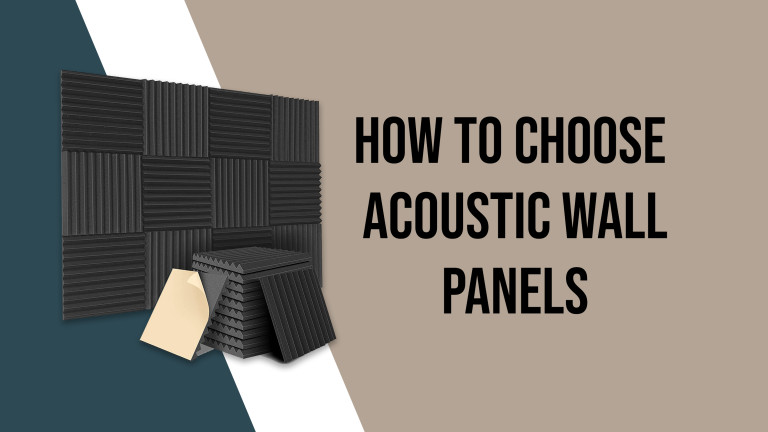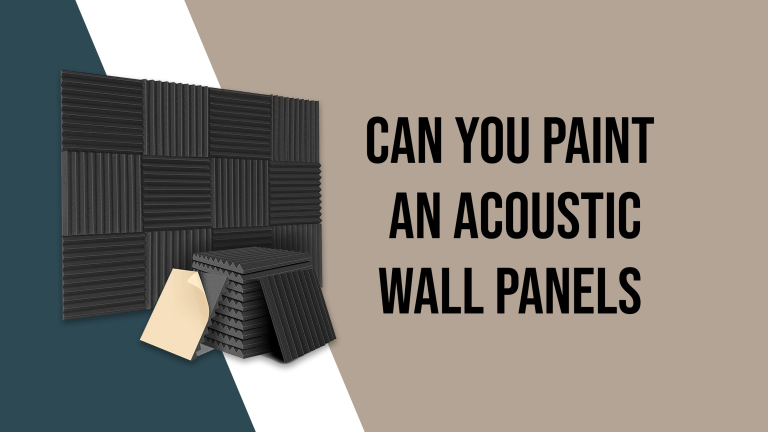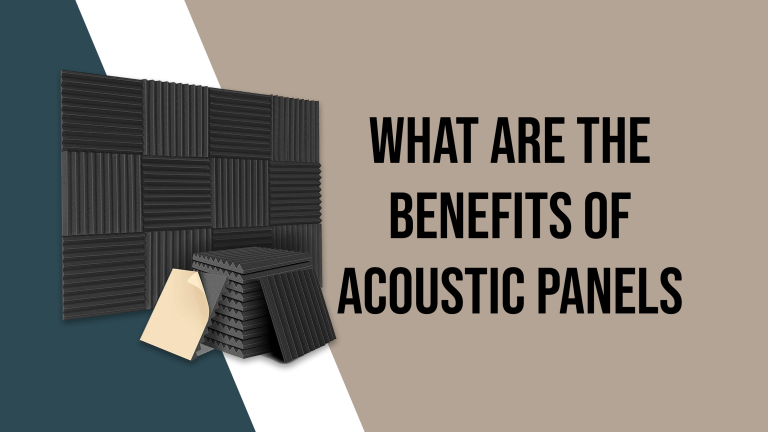Different Types Of Acoustic Panels
Sound quality is a crucial factor to take into account when constructing an interior space.
In order to enhance the audio quality in a room, acoustic panels are useful in this situation. Let’s have a look “What are different types of acoustic panels?”
What Are Different Types Of Acoustic Panels?
Acoustic panels have the capacity to absorb or deflect sounds when placed in the right locations inside a space. The market is filled with several varieties of acoustic panels.
This comprises perforated, fabric-wrapped, metal, moss, ceiling panels, fiber, art, wall-mounted, free-standing, and other types of acoustic panels. .
These acoustic panels are frequently utilized in interior design. It’s crucial to identify your requirements and select the right panel type for the rooms you want.
In this article, we will cover different types of acoustic panels. Read it completely.
Types Of Acoustic Panels:
- Acoustic Art Panels
You can soundproof a space without sacrificing your sense of style thanks to art acoustic panels. Even further customization is possible. In reality, utilizing proprietary Dye fusion technology, an expert in acoustic panels can assist you in taking your photographs and putting them on a textile acoustic panel in vibrant, true-to-life colors.
There may be no better option than art acoustic panels if you want to soundproof an area and go wild with your décor. An expert in acoustic panels can show you a wide variety of colorful yet useful art acoustic panels, ensuring that you shouldn’t have any trouble reducing noise and adding some creative flair to a space.
In conclusion, decorative art acoustic panels are an excellent choice for a variety of locations, including auditoriums, bars and restaurants, conference rooms, gyms, homes and offices, hotels, libraries, museums, schools, studios, theaters, etc.
- Timber Acoustic Panels
Wooden grooves are present in timber acoustic panels, which are constructed of wood. They are offered with several types of finishing, including veneers and laminates, to match the style of your room. The groove widths of the timber acoustic panel you select will affect its acoustic performance. For various interior design styles, it is simple to acquire a range of milled wooden panels.
- Perforated acoustic panels
Due to the size and layout of the room, unsupported panels can be used in spaces with little available wall space.
Acoustic pods with built-in panels are another option. You have the chance to escape the commotion and enjoy a world of quiet happiness with these free-standing pods. Without interruptions from the outside world, employees can fully commit to a project.
In addition to this, a perforated acoustic panel offers the advantages listed below:
- Boost privacy:
These panels provide the space or the entire house more privacy.
- Better sound:
The conversations are audible throughout the rooms. In certain settings, it is also simpler to record high-quality audio.
- Better sound absorption:
The panels quieten the space by absorbing sound.
- Fabric wrapped panels
A fabric-wrapped panel might not be as efficient as traditional acoustic panels, according to some of us. Contrarily, fabric-wrapped acoustic panels have produced outstanding acoustic results. They offer a variety of sizes, styles, and configurations that successfully minimize noise because they are covered in cloth. Additionally, installation is a simple process.

You don’t have to worry about the laborious process while mounting it to a wall or a ceiling. An expert in acoustic panels will guide you through the procedure, as was already indicated. They will provide you all the specifics on fabric-wrapped acoustic panels and the finest techniques for installing them.
- Acoustic Foam
The sound waves can’t reflect off the ceiling or other hard surfaces thanks to the acoustic foam. Foam absorbs energy and fosters a tranquil, harmonious environment.
It has the ability to lessen outside noise. It doesn’t penetrate the structure, creating a calm environment inside.
On the other hand, soundproofing is not a feature of the noise-dampening foams. It makes it possible for folks to enjoy a variety of activities at home that would not be feasible otherwise.
Additionally, you can easily and affordably install it.
- Acoustic plasterboard panels
High traffic areas frequently have their ceilings covered with plasterboard acoustic panels. They can be found in venues like auditoriums, libraries, and theaters. Plasterboard acoustic panels provide improved acoustics because they have round perforations that go all the way through them.
- Metal panels for acoustics
Metal skins that are enclosed in an acoustically absorbent substance make up metal acoustic panels. Metal acoustic panels have the advantages of being incredibly durable and effective at absorbing sound. They are particularly well suited for spaces that demand superior sound absorption, toughness, and aesthetically beautiful design. Metal acoustic panels are typically found in public spaces like concert halls, gyms, and airports.
- Acoustic Plasters
Acoustic plasters are one of the most often utilized acoustic materials. Plasters that incorporate fibers or aggregate to absorb sound are known as acoustic plasters. They are designed for small areas that need customization, such as those with curving walls and ceilings. Plasters for acoustics are a wonderful option since they can be effortlessly put over huge surfaces. Despite the fact that they are often white, you may always paint them in colors that go with the room you are constructing.
- Moss Acoustic Panels
As their name suggests, moss acoustic panels are constructed from actual moss. They are a living item that, once installed, doesn’t need to be maintained because they take in moisture and nutrients from the air. However, you must protect them from the sun and keep the humidity level between 40 and 50 percent. Moss acoustic panels are attractive and require little upkeep while being quite effective in absorbing sound. They are therefore a preferred option in many contemporary company headquarters and shopping centers.
What is the function of acoustic panels?
Sound waves are absorbed by acoustic panels, which lowers noise levels inside the space. These panels are intended to clear the space of unneeded sound pollution. As a result, it is able to take notes, record activities, and listen to conversations.
The acoustic panels vibrate as a result of the airborne sound waves that strike them. Then, when friction transforms sound energy into kinetic energy, these vibrations increase.
The kinetic energy is uncontrollable. There are no sound waves left behind once it evaporates. There are many different sizes and hues of acoustic panels. The panels have a cushiony feel and tend to make the room’s walls appear softer.
Frequently Ask Questions (FAQs)
- How many acoustic panels are there?
While the quantity of panels you want vary depending on the uses for your area, a good place to start is with approximately 10 panels. However, for purposes requiring more sound control, that number can increase to approximately 30 panels. This might seem a little frightening. After all, the range between “10-12” and “30-35” is quite wide.
- How do I choose an acoustic panel?
The size dimensions of the sound-absorbing panels should be carefully considered in order to establish the size, thickness, and surface that the panels must have. All of these elements will affect the panel’s overall capacity to absorb sound.
- Do acoustic panels reduce noise?
An acoustic panel is used to dampen noise and lessen echo and reverberation in a room. We can discuss the absorption, diffusion, and attenuation principles of good acoustics for both types. These are all connected to the panels’ acoustic performance.
- How long do acoustic panels last?
Acoustic foam panels will start to flake off and release dirt particles into the atmosphere around 8 years after they are made. The material is no longer catching and converting echoes, which is harmful for your ventilation system in addition to being terrible for the material itself. Over time, acoustic foam will deteriorate.
Related Articles
Can You Paint Acoustic Wall Panel
How To Make An Acoustic Wall Panel
What Are The Benefits of Acoustic Panels
Acoustic panels Vs. Soundproofing








